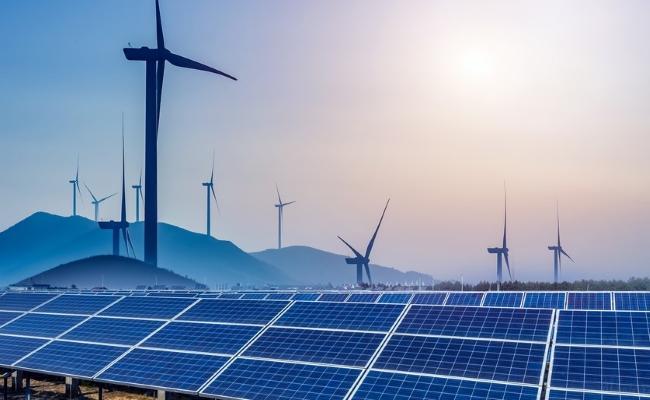Why Renewable Energy is Critical for Sustainable Development in India?

Greater renewable energy deployment in India doesn’t only secure a greener future and better access to energy for the country but also aids economic development. A major conversation presently in the space is of sustainable manufacturing, by generating power from clean energy sources. Sustainable energy is also poised to be the modern energy choice for citizens, considering the amount of Government support it’s received and the investment the renewable energy market has garnered.
Our government has continuously designed policies, programs, and a liberal economic environment that’s conducive to attracting FDI, to establish a profitable renewable energy market. PSUs like RITES have also made efforts to provide consultancy services for renewable energy projects to achieve increased success, right from concept-to-commissioning. InvestIndia shared that India ranked 3rd in the renewable energy country attractive index in 2021.
According to the International Renewable Energy Agency’s Annual Report in 2021, solar will make up the largest share of renewable energy jobs in 2050, with 19.9 million jobs, followed by bioenergy (13.7 million), wind (5.5 million) and hydropower (3.7 million).
Over the past few years, renewable energy projects have also been notably contributing to India’s domestic job market. The achievements made by the sector and the remarkable companies contributing to the significant rise in renewable energy projects are building the demand for prospective jobs.
Even though India is doing so well in terms of assimilating renewable energy and using it to power national development, it’s much harder for India to do than other countries. The usual challenges when it comes to renewables in the country are three-fold, as per an article by Brookings, viz (1) intermittency (2) location-specific potential (renewable energy concentrated areas can sometimes be away from the people whom most need it) (3) higher costs.
India’s power grid is also weak and unstable, kept afloat by massive amounts of load-shedding, therefore usually impacting renewable energy reserve margins and options like rooftop solar devices that work with grid-tie inverters which switch off during a power outage. Therefore, the country will be missing its renewable energy targets for 2022 - of generating 175 GW of green energy – and has pushed the deadline by a couple of months.
However, the renewable energy projects being spearheaded by India’s public and private entities need to find ways to overcome these obstacles and work in collaboration with policymakers for sectoral improvements. Even more so, as according to a World Energy Council prediction, global electricity demand will peak in 2030.
What can be done?
As a developing nation, India has a massive demand for energy. The country is one of the largest coal consumers in the world and frequently imports costly fossil fuels – as per a report from the Centre of Monitoring Economy, India reportedly imported 213 million tons of coal in 2017-18. Close to 74% of the energy demand in India is supplied by coal and oil.
According to the World Institute Report 2017, India is responsible for 6.6% of global carbon emissions due to its huge energy expenditure – and is ranked fourth for these emissions behind China, the USA, and the EU.
Innovators, project developers and investors need to work in tandem to make electricity production rely more on renewable energy and thereby reduce global greenhouse gas emissions. The standard of living in the country must be improved by ensuring all citizens have access to clean and reliable electricity.
The National Electricity Plan, developed by the Ministry of Power (MoP) is a step forward in achieving the goal of efficient energy, at an affordable cost that’s clean and reliable – as it details an action plan that affects the entire country positively.
Another step forward in this positive direction is the Government of Madhya Pradesh’s plan to build the world’s largest floating solar plant on the Narmada river’s Omkareshwar Dam. Therefore, there is also an urgent need to boost the renewable energy sector by funding ambitious projects like the floating solar power plant in Khandwa, Madhya Pradesh that are attempting to run India on alternative energy.
Communication efforts and awareness programs that aim to promote the benefits of saving energy among citizens, also need public funding and widespread support. Citizens that are positively using solar, wind, waste, biomass, and hydropower energies should be profiled and promoted among various audiences. The affordability of alternate sources of energy should also be advocated.
Taking these steps can help India reach its goal of attaining 175 GW of renewable energy, which would consist of 100 GW from solar energy, 10 GW from bio-power, 60 GW from wind power, and 5 GW from small hydropower plants. Investors have vowed to achieve 270 GW, which showcases the clear vision to transform towards a greener future for all - towards an improved India in the Amrit Kaal.
—— Dr. Aatish Parashar, Dean and Head, Central University of South Bihar





